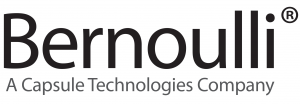Expertise will Provide Valuable Insights on Supporting Clinical Workflow and Driving Improved Quality of Care
Milford, CT—March 27, 2017—Bernoulli, the leader in real-time solutions for patient safety, announced that two prominent physicians will join the company as consultants to explore issues related to real-time healthcare delivery and increased patient safety.
Neil A. Halpern, MD, MCCM, FCCP, FACP, is Director of the Critical Care Center, Chief of the Critical Care Medicine Service and Medical Director of Respiratory Therapy at Memorial Sloan Kettering (MSK) Cancer Center in New York. Dr. Halpern oversees a team of highly experienced doctors, nurse practitioners, physician assistants, respiratory therapists, research and bedside nurses, and critical care programmers who help provide care for patients in MSK’s adult medical-surgical intensive care unit (ICU).
Since 2000, he has co-chaired the hospital’s Clinical Device and Product Evaluation Committee, and since 2014, the Alarm Committee at MSK. Between 2005 and 2007, he chaired the multidisciplinary ICU Design Committee that developed the plan and monitored the construction of MSK’s 20-bed medical-surgical adult ICU, which opened in April 2007.
“There is a clear need in healthcare for greater connectivity, interoperability and comprehensive real-time data to support improved patient safety, enhanced care team collaboration and proactive clinical intervention,” said Dr. Halpern. “I look forward to advising Bernoulli on the applications and services that will have the greatest impact.”
Amar Setty, MD, is the CEO of AnesthesiaStat, a Baltimore-based anesthesia consulting and management company operated by practicing, Board Certified anesthesiologists. In addition to an active private practice, Dr. Setty serves as the immediate-Past President of the Maryland Society of Anesthesiologists, where he continues to be an advocate.
He is working to develop data-centric applications for patient-advocated value-based care, ultrasound/video-based artificial intelligence for medical procedures, as well as an app for patient empowerment in chronic pain. He has a unique interest in the use of technology to improve the perioperative experience and is working to build a new system of surgical risk prediction and management. He hopes to improve the quality and care of patients before and after discharge.
“The complexity and exponential growth of patient-generated data in modern care settings can be overwhelming, and even act as a barrier to real-time patient care and interventions if not properly managed,” said Dr. Setty. “I am excited to sharing my perspectives and experiences as a physician with Bernoulli to better facilitate the use of comprehensive real-time patient data to improve patient safety, quality and cost of care.”
“Many of the challenges facing healthcare providers – including mitigating patient safety threats, embarking on value-based care initiatives, and streamlining clinical workflows – require comprehensive real-time data, surveillance and analytics,” said Janet Dillione, CEO of Bernoulli. “Dr. Setty and Dr. Halpern’s clinical expertise will help uncover valuable insights, enabling us to better align our solutions with the needs of hospitals and health systems.”
About Bernoulli
Bernoulli is the leader in real-time solutions for patient safety, with more than 1,200 installed, operational systems. Bernoulli One™ is the market’s only real-time, connected healthcare platform that combines comprehensive and vendor-neutral medical device integration with powerful middleware, clinical surveillance, telemedicine/virtual ICU, advanced alarm management, predictive analytics and robust distribution capabilities into ONE solution that empowers clinicians with tools to drive better patient safety, clinical outcomes, patient experience, and provider workflow. For more information about Bernoulli, visit www.bernoullihealth.com. Follow us on Twitter and LinkedIn. Visit our Resource Center to download case studies, white papers and articles.

 Janet Dillione, CEO of Bernoulli named one of Becker’s Hospital Review’s “ Medtech Women to Know”. This is a prestigious recognition honoring select women in the healthcare field industry. This is a prestigious recognition honoring select women in the healthcare field industry. This dynamic group of 110 women executives are sharing ideas and shaping the future of healthcare IT, Medical Devices and Technology with real-life solutions to the most challenging issues facing the healthcare industry today.
Janet Dillione, CEO of Bernoulli named one of Becker’s Hospital Review’s “ Medtech Women to Know”. This is a prestigious recognition honoring select women in the healthcare field industry. This is a prestigious recognition honoring select women in the healthcare field industry. This dynamic group of 110 women executives are sharing ideas and shaping the future of healthcare IT, Medical Devices and Technology with real-life solutions to the most challenging issues facing the healthcare industry today.
 Alarm signals are disrupting patients’ recovery and exhausting clinical staff, according to a commentary published by Bernoulli Chief Nursing Officer Jeanne Venella, DNP, MS, RN, CEN, CPEN, in the Spring 2017 issue of AAMI Horizons.
Alarm signals are disrupting patients’ recovery and exhausting clinical staff, according to a commentary published by Bernoulli Chief Nursing Officer Jeanne Venella, DNP, MS, RN, CEN, CPEN, in the Spring 2017 issue of AAMI Horizons. The use of middleware for the continuous monitoring of patients at risk of respiratory depression was the subject of a paper just published by Bernoulli Chief Analytics Officer John Zaleski, PhD, CAP, CPHIMS, and Chief Nursing Officer Jeanne Venella, DNP, MS, RN, CEN, CPEN, in the Spring 2017 issue of AAMI Horizons.
The use of middleware for the continuous monitoring of patients at risk of respiratory depression was the subject of a paper just published by Bernoulli Chief Analytics Officer John Zaleski, PhD, CAP, CPHIMS, and Chief Nursing Officer Jeanne Venella, DNP, MS, RN, CEN, CPEN, in the Spring 2017 issue of AAMI Horizons.